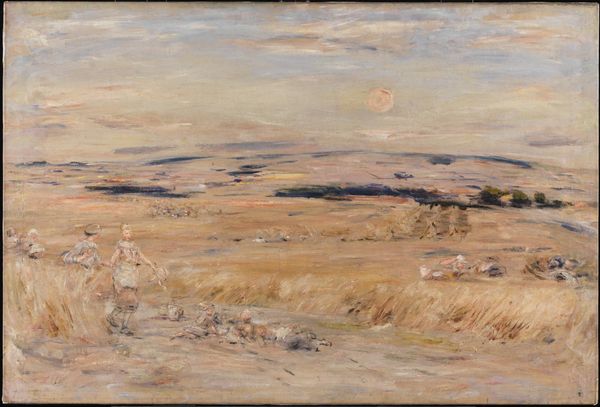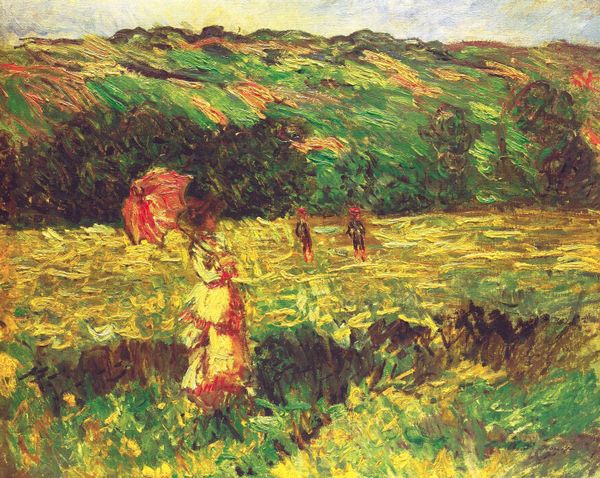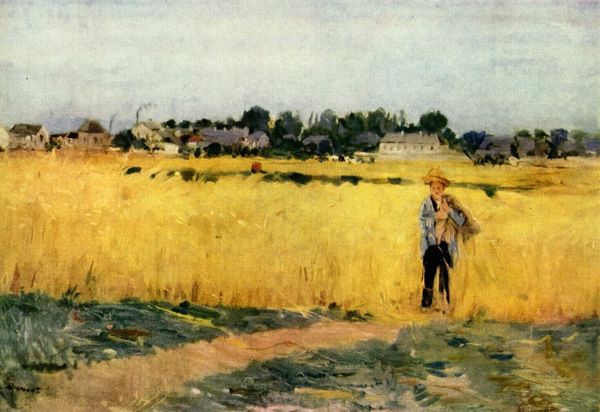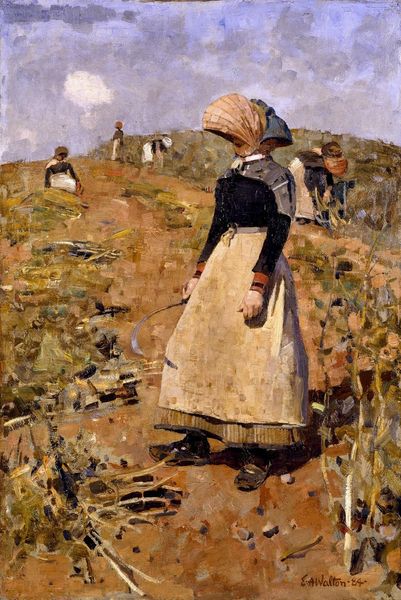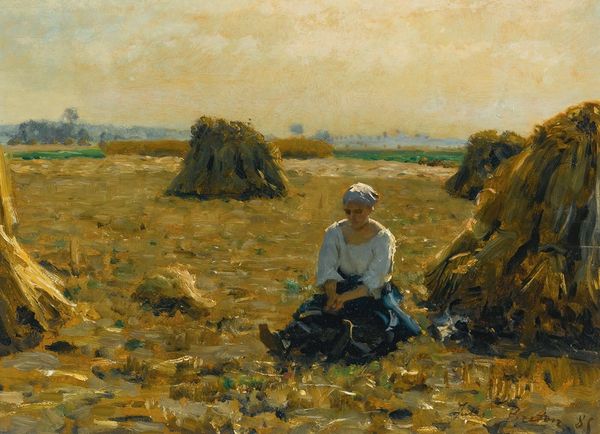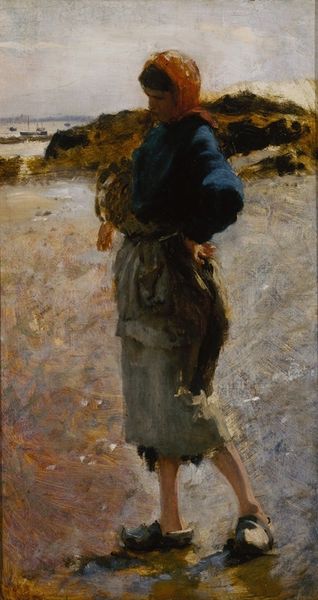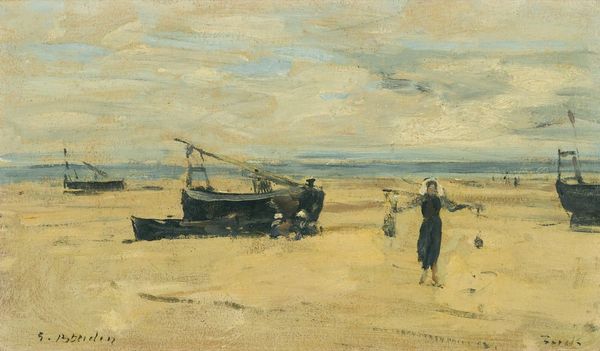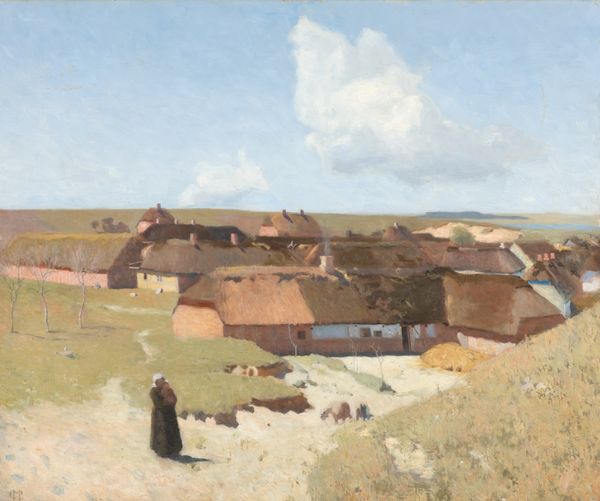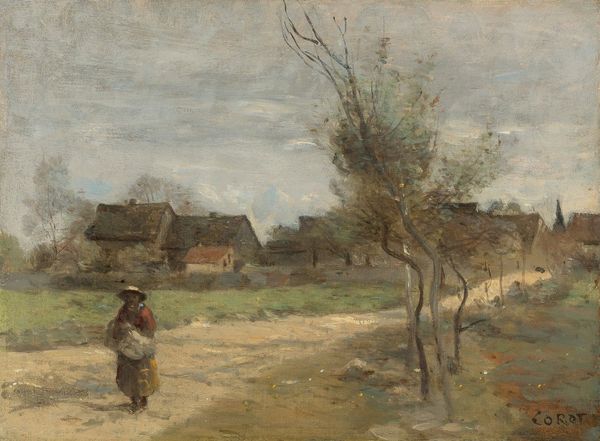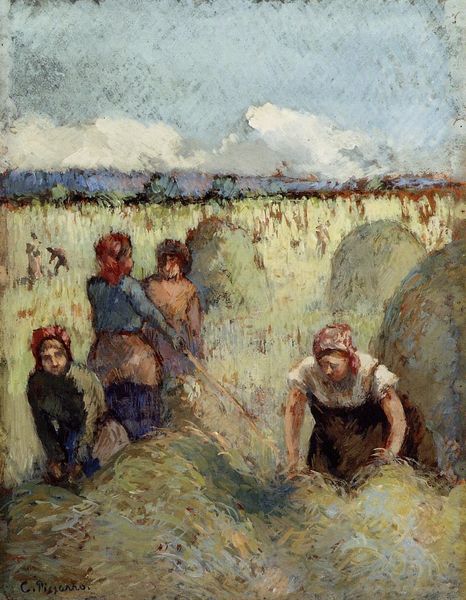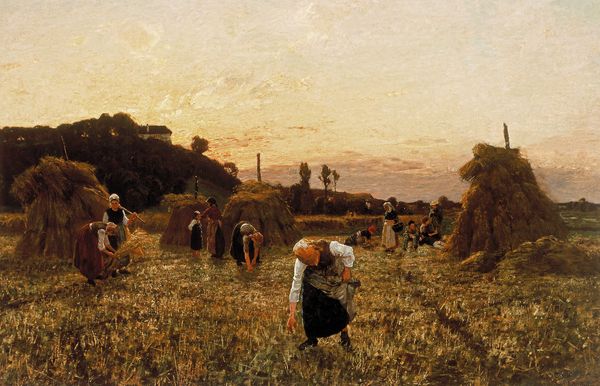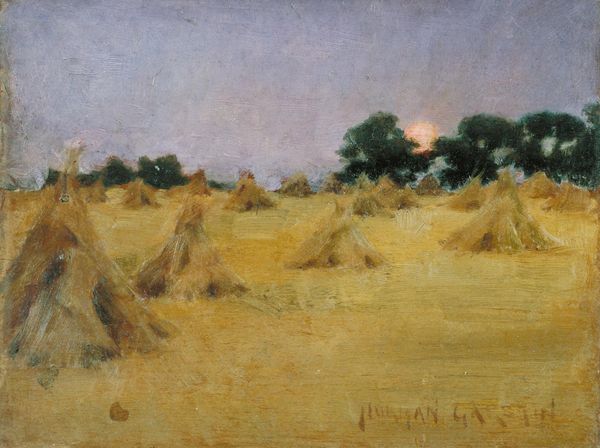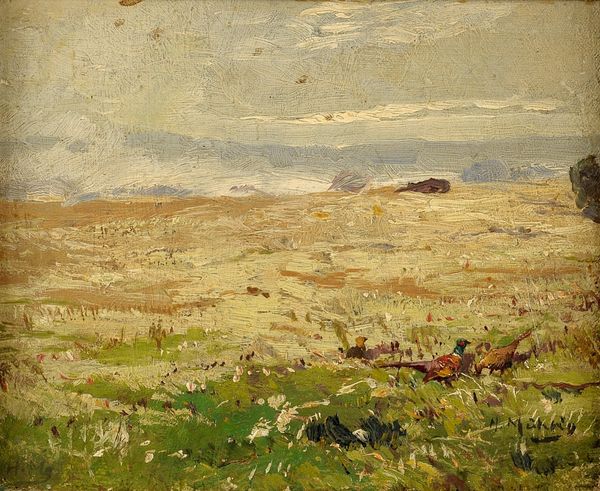
plein-air, oil-paint
#
portrait
#
impressionism
#
plein-air
#
oil-paint
#
landscape
#
impressionist landscape
#
figuration
#
oil painting
#
child
#
genre-painting
#
modernism
Copyright: Public domain
Curator: Let's turn our attention to this evocative piece, "Young Girl in the Fields," by Henri Martin. Editor: It’s rather arresting. The canvas is dominated by yellows and tans, that dissolve into one another, creating a sense of shimmering heat and a solitary figure, is she floating in the landscape or trapped in it? Curator: Martin, a post-Impressionist, was deeply engaged with capturing rural life. Notice how the composition places the girl centrally, almost like a pillar connecting earth and sky. It seems a study in contrasts, doesn't it? The girl, likely a peasant, versus the idealized notion of pastoral life that was marketed at the time? Editor: It is, but for me, it is more about the materiality itself. Look at the paint application—loose, broken strokes that deny the illusion of smooth textures. There is the clear and repetitive process of applying brush strokes. How the work foregrounds labour. Even if the subject matter gestures at something bucolic and picturesque, that surface screams labour. Curator: Indeed, the "plein-air" technique speaks volumes. Martin wasn't just depicting a scene; he was enacting a philosophy. Painting en plein-air made it more democratic than the usual atelier bound painter, placing art making and the land at the intersection of new forms of production and artistic merit. What does it suggest about who and how art should be made? Editor: Exactly! I’m particularly drawn to the way the painting hints at a whole system of labour, it foregrounds materials—from the cultivation of pigment to the factory production of paint—we are forced to reflect on our involvement in that network of materials, labour, and social class. It's much more profound than it appears. Curator: Absolutely, seeing this painting in its time requires recognizing the shift it represented in both subject matter and style. It wasn't merely art for art's sake but an observation—almost an act of documentation—that challenged the established order, blurring boundaries. Editor: A powerful combination of material directness and understated commentary. This seemingly simple painting hides so much complexity beneath the surface of its making.
Comments
No comments
Be the first to comment and join the conversation on the ultimate creative platform.
